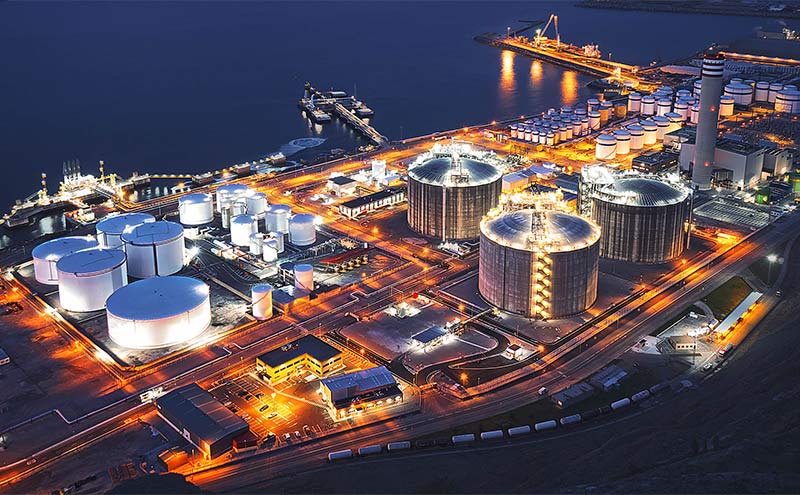- Article

- Infrastructure and Sustainable Finance
- General Sustainability
- Sustainable Financing
- Transition to Net Zero
- Economic
COP27: Will global turbulence derail efforts to tackle climate change?
After a tumultuous year for the global economy – as well as the climate – the COP27 UN Climate Conference is an opportunity for the international community to pull together in the battle against global warming.
When global climate negotiators gather in Sharm el-Sheikh, Egypt, on 7 November for the 27th instalment of the UN Climate Conference, the mood in the room will be very different from COP26 in Glasgow.
COP27 arrives after another string of record-breaking extreme weather events – including heatwaves in Europe, floods in Pakistan and droughts in China. But there are questions over the international community’s willingness to tackle the climate crisis during a turbulent period for geopolitics and the global economy.
They will be a gauge of whether the Russia-Ukraine war, the cost of energy and inflation in major economies have changed the political mood and the speed of climate action.
|
Expectations for COP27 are certainly more measured than they were ahead of last year’s summit. Chan is looking for “balanced progress” on the key issues of adaptation, loss and damage, and finance. While all UN climate conferences are important, he acknowledges that there will be fewer headline commitments compared to Glasgow.
“It won’t be quite as big a deal as last year, because the tasks are different and there are fewer decisions to be made,” said Chan.
The UN framework called for countries to announce more ambitious emissions targets – known as nationally defined contributions (NDCs) – ahead of the 2021 summit. This year, the onus is on governments to show how they will turn those promises into reality.
Delivering on ambition
Speaking at HSBC’s flagship Global Emerging Markets (GEMs) forum in September, Nigel Topping, UN High-Level Climate Action Champion, said that decarbonisation had hit a “speed bump” in 2022. But he pointed to progress with early-stage green hydrogen, green steel, and sustainable aviation fuels as signs of continued progress.
“All the evidence is that we're accelerating the energy transition,” he said.
Topping cited the growth of electric vehicle (EV) penetration as an example.
“Numbers are more than doubling every two years,” he said. “The internal combustion engine is dead globally by the end of this decade.”
Jenny McInnes, Group Head of Sustainability Policy & Partnerships at HSBC, points out that major economies have now embedded their NDCs and net zero commitments into legislation, notably through the US Inflation Reduction Act in August this year, the EU’s Climate Change Law and Australia’s Climate Change Bill.
But global progress in reducing carbon emissions remains insufficient to reach the goals of the Paris Agreement of limiting temperature rises to 1.5°C above pre-industrial levels. The disruption to the global energy system in 2022 has only added to the delay.
“We anticipate some growth in emissions, for example in emerging economies, between now and 2030,” said McInnes, also speaking at the GEMs forum. “And we need to see a rapid scale-back of that.”
The power of the private sector
As countries focus on how to translate their headline targets into implementation, the role of the private sector is becoming ever more important.
National strategies are important because they formalise progress made toward targets, which in turn builds momentum as others follow this example – but they must also include detailed financial propositions.
“We won't see every country submit a new NDC every year – that's actually quite a lot of work,” said Topping. “But turning the plans into financial propositions gives confidence that they can deliver on the ground where it counts.”
“There's a big gap between an NDC, which is of variable quality, and an investable pipeline,” McInnes added.
Who pays for investments?
Finance is always a contentious issue for governments, and the energy price shock and ructions in the currency markets have left many countries in a much weaker position than they were 12 months ago.
Topping points to an increased role for private sector investors as part of the solution.
“Multilateral development banks have sometimes encouraged emerging markets to take on a lot of debt to achieve what could be done entirely with a public-private partnership,” said Topping. “There is a big focus on trying to come up with investment plans that aren't just about massive debt frenzies as we come into what’s going to be a very debt-squeezed world.”
Egypt, for example, is working with the private sector on its transition to renewable energy.
“The plans suggest there is USD500 million of public and USD10 billion of private finance – that’s really good leverage and it’s not reliant on a lot of public debt,” he said.
Even before investment plans are finalised, countries can gain valuable insights into their implementation challenges by engaging with the financial sector.
“Small sums of money can be very effective in the early stages of project development,” said McInnes. “Things like delivering technical assistance programmes, enacting upstream policy and creating an enabling environment can have an outsized impact because they shift the political economy and build institutional capability,” she noted.
Financing the future
Finance will again be high on the agenda at COP27. After developed markets failed to deliver the promised USD100 billion to support adaptation in smaller and developing countries in 2022, the Sharm el-Sheikh summit is likely to see more contentious negotiations on funding for adaptation and resilience.
“Egypt is hosting on behalf of the African continent which is highly vulnerable to the impacts of climate change,” said Chan. “Developing nations will be wary of accepting new promises when previous promises have not been fulfilled.”
Governments and the financial sector will need to come up with new tools to mobilise the funds needed.
“We need to kill the myth that there's no investment case in adaptation and resilience,” added Topping. “This means demonstrating that adaptation and resilience are bankable, and that there is an investment case.”
Collaboration will be important to changing this mindset. A number of partnerships and alliances are already in place, including the Net Zero Banking Alliance of 117 banks from 41 countries representing USD70 trillion of assets, and the Coalition for Climate Resilient Investment (CCRI), which includes the world’s largest buy-side institutions, as well as data providers, research institutions and non-profit organisations.
HSBC also has a philanthropic affiliation with the World Resources Institute (WRI) and World Wildlife Fund (WWF) called the Climate Solutions Partnership.
“We need to work with others – the thought leaders, the implementers – to test, build, scale and replicate the innovative solutions required to support the net-zero transition,” said McInnes.
HSBC is also supporting innovations around blended finance and the development of the FAST-Infra label as a way to improve the flow of finance for sustainable infrastructure projects globally.
Egypt’s COP27 will be closely watched for confirmation that the multilateral community remains committed to tackling climate change – and how the private sector can support to drive action and implementation.
You can listen to this discussion in our podcast episode ‘What does a successful COP27 look like?’ via the buttons below.
You can read more on HSBC Global Research’s views on Climate Change & COP27 here.






